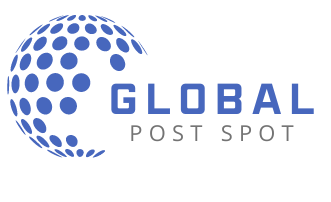Quality Assurance as a Service (Qaas) is revolutionizing the way businesses approach quality assurance. As digital transformation accelerates, companies are seeking more efficient, flexible, and cost-effective ways to ensure their products meet the highest standards. QaaS provides a comprehensive solution, offering on-demand quality assurance services tailored to the specific needs of each organization. In this article, we will explore the key aspects of Qaas technology, its benefits, and how it integrates with other innovative technologies like Granular Recovery Technology and Exodus Propulsion Technologies.
Understanding Qaas Technology:
Qaas technology is crucial for businesses in various sectors, including software development, manufacturing, and healthcare. By leveraging QaaS, companies can access top-tier quality assurance services without the need for substantial in-house resources.
What is QaaS?
Quality Assurance as a Service (QaaS) is a model where quality assurance processes and services are delivered via the cloud. This approach allows businesses to outsource their quality assurance needs to specialized providers, ensuring thorough and consistent testing and evaluation of products.
Benefits of Qaas:
Flexibility:
QaaS offers unparalleled flexibility, allowing companies to scale their quality assurance efforts up or down based on project demands.
Cost-Effectiveness:
By outsourcing quality assurance, businesses can reduce overhead costs associated with maintaining in-house QA teams and infrastructure.
Expertise:
QaaS providers typically employ experts with extensive experience in various industries, ensuring high-quality and reliable services.
Speed:
With access to advanced tools and methodologies, QaaS providers can accelerate the quality assurance process, helping companies bring products to market faster.
Key Features of QaaS:
Automation:
QaaS leverages automation tools to perform repetitive and time-consuming tasks, increasing efficiency and accuracy.
Integration:
QaaS solutions can seamlessly integrate with existing development and production workflows, enhancing overall productivity.
Scalability:
QaaS services can be easily scaled to meet the needs of any project, regardless of size or complexity.
Customization:
Providers can tailor their services to align with the specific requirements and goals of each client.
How QaaS Works
QaaS providers use a combination of automated testing tools, manual testing, and advanced analytics to evaluate the quality of products. The process typically involves the following steps:
-
Requirement Analysis:
Understanding the client’s needs and defining the scope of the quality assurance process.
-
Test Planning:
Developing a comprehensive test plan that outlines the testing strategies, tools, and methodologies to be used.
-
Test Execution:
Performing automated and manual tests to identify defects and ensure compliance with quality standards.
-
Reporting:
Generating detailed reports that highlight the findings, including defects, performance metrics, and recommendations for improvement.
Integrating QaaS with Other Technologies:
QaaS technology can be effectively integrated with other innovative technologies to enhance overall performance and reliability. For instance, Granular Recovery Technology can be used alongside QaaS to ensure the thorough testing and recovery of critical data in cloud environments. Granular Recovery Technology offers precise data recovery solutions, making it an ideal complement to QaaS.
Similarly, QaaS can support the testing and validation of advanced systems like Exodus Propulsion Technologies. By providing rigorous quality assurance, QaaS ensures that such cutting-edge technologies operate flawlessly under various conditions. Exodus Propulsion Technologies represent a significant advancement in propulsion systems, and integrating QaaS can help maintain their high performance and reliability.
Implementing QaaS in Your Organization:
Step 1:
Identify Your Needs Begin by assessing your quality assurance requirements. Determine the scope of testing needed, the types of products or services to be evaluated, and the specific goals you aim to achieve.
Step 2:
Choose a QaaS Provider: Select a reputable QaaS provider with a proven track record in your industry. Consider factors such as expertise, service offerings, and customer reviews.
Step 3:
Define the Scope of Services: Work with your QaaS provider to define the scope of services, including the types of tests to be performed, the tools and methodologies to be used, and the expected deliverables.
Step 4:
Integrate QaaS into Your Workflow: Ensure that the QaaS provider can seamlessly integrate their services into your existing workflows. This may involve configuring automated testing tools, setting up communication channels, and establishing reporting protocols.
Step 5:
Monitor and Evaluate Performance: Regularly monitor the performance of the QaaS provider and evaluate the quality of their services. Use the reports and insights provided to make informed decisions and continuous improvements.
Conclusion:
Quality Assurance as a Service (QaaS) is transforming the landscape of quality assurance by offering flexible, cost-effective, and expert-driven solutions. By integrating QaaS with other innovative technologies like Granular Recovery Technology and Exodus Propulsion Technologies, businesses can enhance their overall performance and reliability. Implementing Qaas Technology in your organization can lead to significant improvements in product quality, customer satisfaction, and operational efficiency. Embrace QaaS today to stay ahead in the competitive market and deliver superior products and services to your customers.



